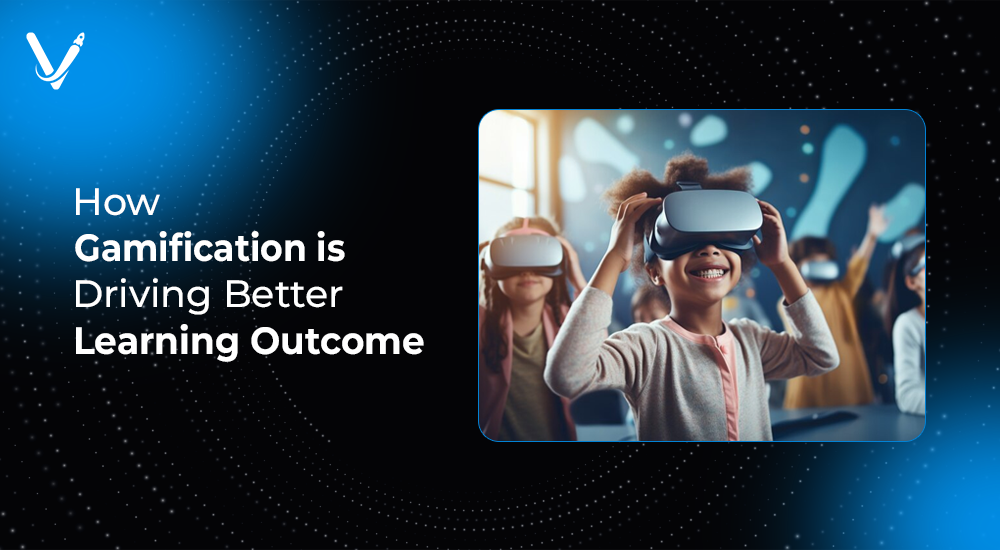How Gamification Is Driving Better Learning Outcome


- May 14, 2025



In today’s fast-paced digital world, traditional methods of learning are rapidly evolving. As the education landscape shifts to embrace new technologies, gamification in learning is taking center stage. This innovative approach to education, which integrates game-like elements into the learning process, is transforming the way students engage with educational content. But how exactly is gamification driving better learning outcomes? In this article, we’ll explore the power of gamification in education, its benefits, real-world examples, and how it’s shaping the future of learning.
At its core, gamification in learning refers to the application of game-design elements and principles to non-game contexts, like education. These elements include things like points, badges, leaderboards, challenges, and rewards. The primary goal is to make learning more interactive, engaging, and motivating by tapping into the natural human desire for achievement, competition, and progression.
Gamification Application in learning doesn’t necessarily mean turning the entire curriculum into a game. Instead, it focuses on incorporating fun and motivating aspects that help students stay engaged, making learning feel less like a chore and more like an enjoyable experience. For instance, students may earn points for completing tasks or challenges, and these points can be used to unlock new levels or rewards.
Gamification offers numerous benefits that can significantly enhance the learning process. Let’s take a closer look at the key advantages:
One of the most significant benefits of gamification is its ability to increase student engagement. By incorporating elements like points, badges, and levels, gamification taps into students’ intrinsic motivation to succeed.
When students see the progress they’re making through tangible rewards and recognition, it encourages them to keep going. Research shows that students who engage in gamified learning experiences are more likely to remain focused, enthusiastic, and committed to their studies.
Gamification encourages active participation, which leads to better retention of information. The interactive nature of gamified learning helps reinforce concepts and fosters a deeper understanding.
Instead of passively receiving information, students actively engage in challenges, quizzes, and problem-solving tasks that require them to apply what they’ve learned. This hands-on approach to learning enhances retention and makes the information more memorable.
Through gamification, educators can tailor learning experiences to meet the individual needs of students. For example, different levels of difficulty can be set for different students based on their abilities, allowing them to progress at their own pace.
By offering a range of challenges, educators can ensure that students are constantly challenged without feeling overwhelmed. This personalized approach helps each student stay motivated and engaged.
Gamified learning platforms provide immediate feedback, which is critical for helping students understand where they went wrong and how they can improve.
When students receive quick feedback, they can adjust their learning strategies accordingly, leading to faster progress. This continuous cycle of action, feedback, and improvement makes learning more dynamic and effective.
Game-based learning takes gamification a step further. While gamification adds game-like elements to learning, game-based learning integrates actual games into the educational process. In this approach, students learn by playing a game that has been designed to teach specific concepts or skills. The idea is that playing a game can make learning more engaging, immersive, and interactive.
A notable example of game-based learning is the use of simulations and educational video games in the classroom. These games are often designed with specific learning objectives in mind, such as teaching math, history, or science through interactive storytelling or puzzles. By engaging students in a dynamic learning environment, game-based learning encourages active participation and deepens their understanding of the subject matter.
Several game development companies and educational institutions have successfully integrated gamification into their curricula, showcasing its potential to enhance learning outcomes. Here are a few real-world examples:
These examples demonstrate how gamification can be successfully applied to various learning environments, making education more dynamic and enjoyable for students.
While gamification is often associated with education, its principles have extended beyond the classroom into the business world. Companies are leveraging gamification to improve employee engagement, boost productivity, and enhance training programs. For instance, companies use gamified elements like badges, leaderboards, and points to encourage employees to meet performance targets, complete training modules, or collaborate with teammates.
In customer-facing roles, businesses use gamification applications to incentivize customer engagement. Loyalty programs, for example, often use points or rewards to encourage customers to make repeat purchases. This creates a sense of achievement and reinforces customer loyalty.
By introducing gamification into business processes, companies can improve the overall employee experience, promote ongoing learning, and boost performance.
The future of gamification in learning looks promising. As technology continues to evolve, we can expect even more immersive and interactive gamified experiences. Virtual reality (VR), augmented reality (AR), and artificial intelligence (AI) are expected to play a significant role in the future of gamified learning. These technologies can create highly interactive, immersive environments where students can engage in realistic simulations, making learning even more dynamic and engaging.
As the world continues to embrace digital learning, gamification will likely become an integral part of educational systems worldwide, creating a more personalized and engaging learning experience for all students.
Gamification is revolutionizing the way we learn by making education more engaging, enjoyable, and effective. By leveraging game elements such as points, badges, and leaderboards, gamification in learning boosts student motivation, enhances retention, and provides a personalized learning experience. As seen through real-world examples, this approach is not only benefiting students but also transforming businesses by improving employee engagement and productivity. With the continuous evolution of technology, gamification is poised to play an even more significant role in shaping the future of education.
To ensure that your educational environment thrives in the age of gamification, partnering with a leading game development company or adopting gamified learning platforms can be a game-changer. At Vasundhara Infotech, we specialize in developing innovative solutions that incorporate gamification to boost learning outcomes and drive success. Let us help you unlock the full potential of gamified learning for your organization.
Copyright © 2025 Vasundhara Infotech. All Rights Reserved.